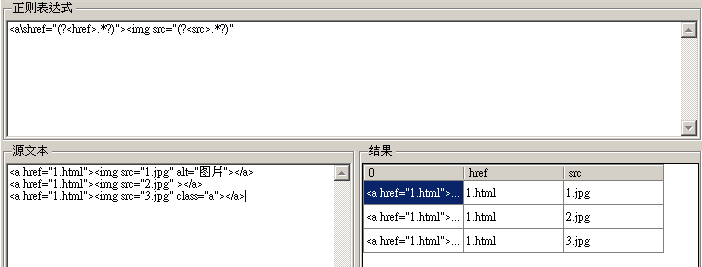紧急求助
最近使用SocketAsyncEvents开发个tcp服务,测试了下msdn的例子,遇到一个很郁闷的问题,客户端用tcpclient写入数据时当并发达到200+的时候就会出现大量connectionreset错误。求高手解。注:初来找到,没有分可送,抱歉。
急等
服务端代码
using System;
using System.Collections.Generic;
using System.Net;
using System.Net.Sockets;
using System.Text;
using System.Threading;
namespace SocketServerTester
{
class SocketServer
{
private int m_numConnections; // the maximum number of connections the sample is designed to handle simultaneously
private int m_receiveBufferSize;// buffer size to use for each socket I/O operation
BufferManager m_bufferManager; // represents a large reusable set of buffers for all socket operations
const int opsToPreAlloc = 2; // read, write (don't alloc buffer space for accepts)
Socket listenSocket; // the socket used to listen for incoming connection requests
// pool of reusable SocketAsyncEventArgs objects for write, read and accept socket operations
SocketAsyncEventArgsPool m_readWritePool;
int m_totalBytesRead; // counter of the total # bytes received by the server
int m_numConnectedSockets; // the total number of clients connected to the server
Semaphore m_maxNumberAcceptedClients;
SocketAsyncEventArgsPool m_acceptPool;
public SocketServer(int numConnections, int receiveBufferSize)
{
m_totalBytesRead = 0;
m_numConnectedSockets = 0;
m_numConnections = numConnections;
m_receiveBufferSize = receiveBufferSize;
// allocate buffers such that the maximum number of sockets can have one outstanding read and
//write posted to the socket simultaneously
m_bufferManager = new BufferManager(receiveBufferSize * numConnections * opsToPreAlloc,
receiveBufferSize);
m_readWritePool = new SocketAsyncEventArgsPool(numConnections);
m_maxNumberAcceptedClients = new Semaphore(numConnections, numConnections);
m_acceptPool = new SocketAsyncEventArgsPool(numConnections * 2);
}
public void Init()
{
// Allocates one large byte buffer which all I/O operations use a piece of. This gaurds
// against memory fragmentation
m_bufferManager.InitBuffer();
// preallocate pool of SocketAsyncEventArgs objects
SocketAsyncEventArgs readWriteEventArg;
for (int i = 0; i < m_numConnections; i++)
{
//Pre-allocate a set of reusable SocketAsyncEventArgs
readWriteEventArg = new SocketAsyncEventArgs();
readWriteEventArg.Completed += new EventHandler<SocketAsyncEventArgs>(IO_Completed);
readWriteEventArg.UserToken = new AsyncUserToken();
// assign a byte buffer from the buffer pool to the SocketAsyncEventArg object
m_bufferManager.SetBuffer(readWriteEventArg);
// add SocketAsyncEventArg to the pool
m_readWritePool.Push(readWriteEventArg);
}
for (int i = 0; i < m_numConnections * 2; ++i)
{
SocketAsyncEventArgs e = new SocketAsyncEventArgs();
e.Completed += new EventHandler<SocketAsyncEventArgs>(IO_Completed);
e.UserToken = null;
m_acceptPool.Push(e);
}
}
public void Start(IPEndPoint localEndPoint)
{
// create the socket which listens for incoming connections
listenSocket = new Socket(localEndPoint.AddressFamily, SocketType.Stream, ProtocolType.Tcp);
listenSocket.Bind(localEndPoint);
// start the server with a listen backlog of 100 connections
listenSocket.Listen(100);
// post accepts on the listening socket
StartAccept(null);
//Console.WriteLine("{0} connected sockets with one outstanding receive posted to each....press any key", m_outstandingReadCount);
Console.WriteLine("Press any key to terminate the server process....");
Console.ReadKey();
}
public void StartAccept(SocketAsyncEventArgs acceptEventArg)
{
if (acceptEventArg == null)
{
acceptEventArg = new SocketAsyncEventArgs();
acceptEventArg.Completed += new EventHandler<SocketAsyncEventArgs>(AcceptEventArg_Completed);
}
else
{
// socket must be cleared since the context object is being reused
acceptEventArg.AcceptSocket = null;
}
m_maxNumberAcceptedClients.WaitOne();
bool willRaiseEvent = listenSocket.AcceptAsync(acceptEventArg);
if (!willRaiseEvent)
{
ProcessAccept(acceptEventArg);
}
}
void AcceptEventArg_Completed(object sender, SocketAsyncEventArgs e)
{
ProcessAccept(e);
}
private void ProcessAccept(SocketAsyncEventArgs e)
{
Interlocked.Increment(ref m_numConnectedSockets);
Console.WriteLine("Client connection accepted. There are {0} clients connected to the server",
m_numConnectedSockets);
// Get the socket for the accepted client connection and put it into the
//ReadEventArg object user token
SocketAsyncEventArgs readEventArgs = m_readWritePool.Pop();
((AsyncUserToken)readEventArgs.UserToken).Socket = e.AcceptSocket;
// As soon as the client is connected, post a receive to the connection
bool willRaiseEvent = e.AcceptSocket.ReceiveAsync(readEventArgs);
if (!willRaiseEvent)
{
ProcessReceive(readEventArgs);
}
e.AcceptSocket = null;
// Accept the next connection request
StartAccept(e);
}
void IO_Completed(object sender, SocketAsyncEventArgs e)
{
// determine which type of operation just completed and call the associated handler
switch (e.LastOperation)
{
case SocketAsyncOperation.Receive:
ProcessReceive(e);
break;
case SocketAsyncOperation.Send:
ProcessSend(e);
break;
default:
break;
}
}
private void ProcessReceive(SocketAsyncEventArgs e)
{
// check if the remote host closed the connection
AsyncUserToken token = (AsyncUserToken)e.UserToken;
if (e.BytesTransferred > 0 && e.SocketError == SocketError.Success)
{
//increment the count of the total bytes receive by the server
Interlocked.Add(ref m_totalBytesRead, e.BytesTransferred);
Console.WriteLine("The server has read a total of {0} bytes", m_totalBytesRead);
//echo the data received back to the client
e.SetBuffer(e.Offset, e.BytesTransferred);
bool willRaiseEvent = token.Socket.SendAsync(e);
if (!willRaiseEvent)
{
ProcessSend(e);
}
}
else
{
CloseClientSocket(e);
}
}
private void ProcessSend(SocketAsyncEventArgs e)
{
if (e.SocketError == SocketError.Success)
{
// done echoing data back to the client
AsyncUserToken token = (AsyncUserToken)e.UserToken;
// read the next block of data send from the client
bool willRaiseEvent = token.Socket.ReceiveAsync(e);
if (!willRaiseEvent)
{
ProcessReceive(e);
}
}
else
{
CloseClientSocket(e);
}
}
private void CloseClientSocket(SocketAsyncEventArgs e)
{
AsyncUserToken token = e.UserToken as AsyncUserToken;
// close the socket associated with the client
try
{
token.Socket.Shutdown(SocketShutdown.Send);
}
// throws if client process has already closed
catch (Exception) { }
token.Socket.Close();
// decrement the counter keeping track of the total number of clients connected to the server
Interlocked.Decrement(ref m_numConnectedSockets);
m_maxNumberAcceptedClients.Release();
Console.WriteLine("A client has been disconnected from the server. There are {0} clients connected to the server", m_numConnectedSockets);
// Free the SocketAsyncEventArg so they can be reused by another client
m_readWritePool.Push(e);
}
}
}
--------------------编程问答-------------------- 客户端代码:
--------------------编程问答-------------------- 客户端调用:
using System;
using System.Collections.Generic;
using System.Net;
using System.Net.Sockets;
using System.Threading;
using System.Text;
namespace SocketClientTester
{
class SocketClient
{
byte[] header;
byte[] buffer;
IPEndPoint server;
TcpClient client;
NetworkStream stream;
public int ClientID;
static int __ids__;
public SocketClient()
{
header = new byte[1];
header[0] = (byte)12;
buffer = Encoding.UTF8.GetBytes("Hello World!");
server = new IPEndPoint(IPAddress.Loopback, 9001);
client = new TcpClient();
client.Connect(server);
stream = client.GetStream();
ClientID = Interlocked.Increment(ref __ids__);
}
public int Start()
{
stream.Write(header, 0, header.Length);
stream.Write(buffer, 0, buffer.Length);
int len = stream.Read(header, 0, 1);
if (len != 1)
{
}
len += stream.Read(buffer, 0, buffer.Length);
if (len != buffer.Length + header.Length)
{
}
return len;
}
}
}
static void Main(string[] args)
{
Program p = new Program();
p.Start(1000);
Console.ReadLine();
}
void Start(int count)
{
for (int i = 0; i < count; ++i)
{
AsyncSocketClient client = new AsyncSocketClient();
ThreadPool.QueueUserWorkItem(new WaitCallback(StartSend), client);
}
}
void StartSend(object state)
{
AsyncSocketClient client = (AsyncSocketClient)state;
client.Start();
Console.WriteLine(client.ClientID + "\tOK");
} --------------------编程问答-------------------- 代码真多.顶个先. --------------------编程问答-------------------- 多线程不同步吗?查查信号量是不是有问题 --------------------编程问答--------------------
 真多
--------------------编程问答--------------------
楼主啊,这么多代码,楞个看啊?
真多
--------------------编程问答--------------------
楼主啊,这么多代码,楞个看啊?
补充:.NET技术 , C#




